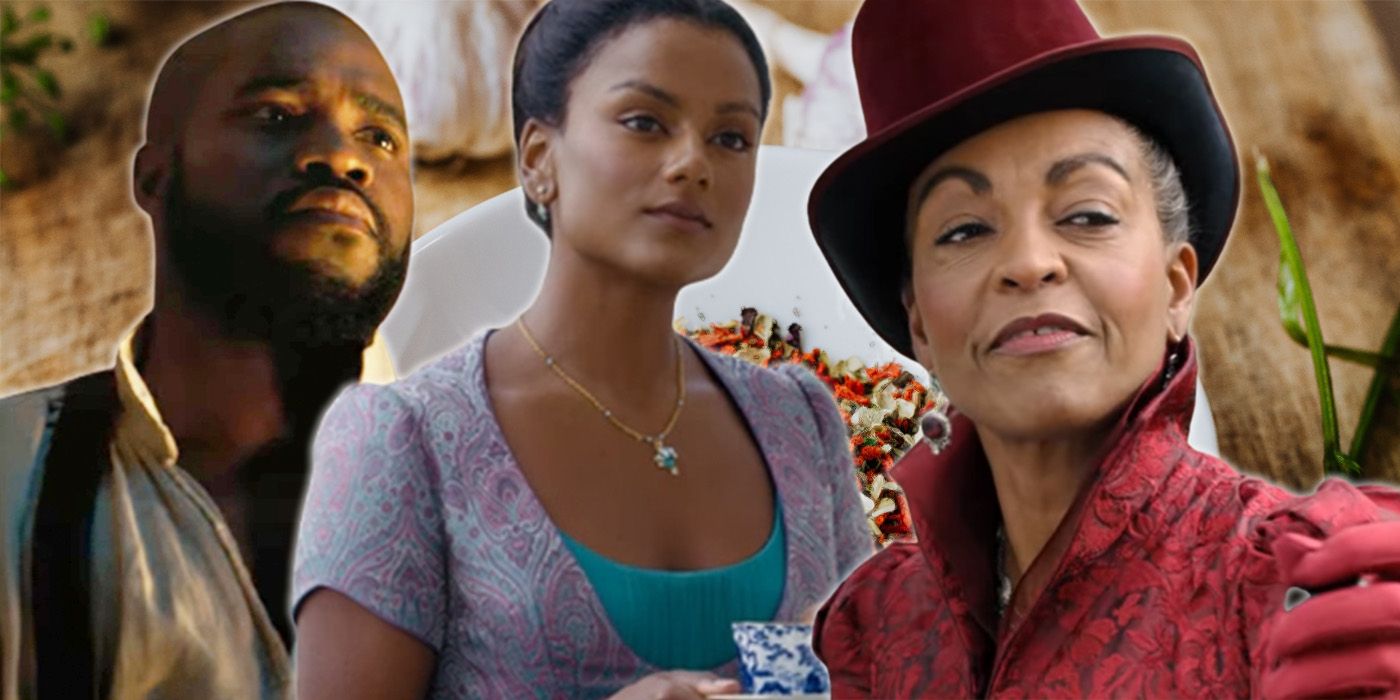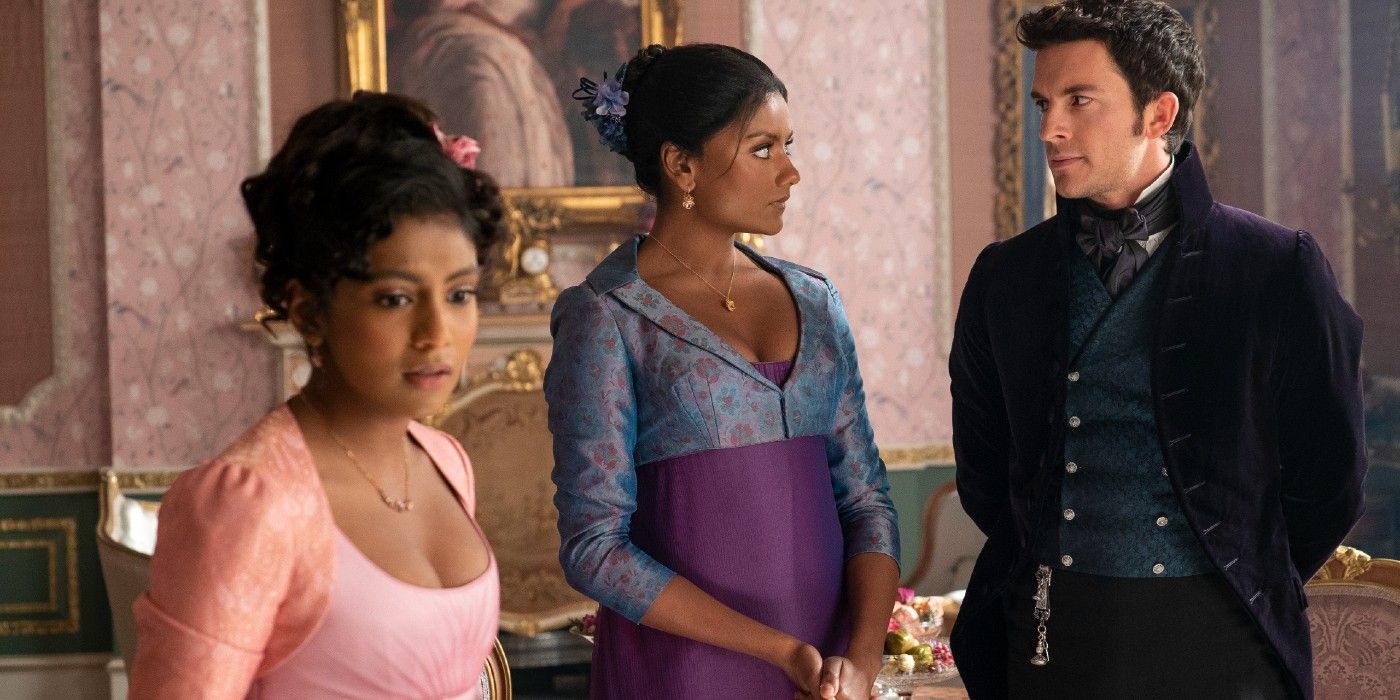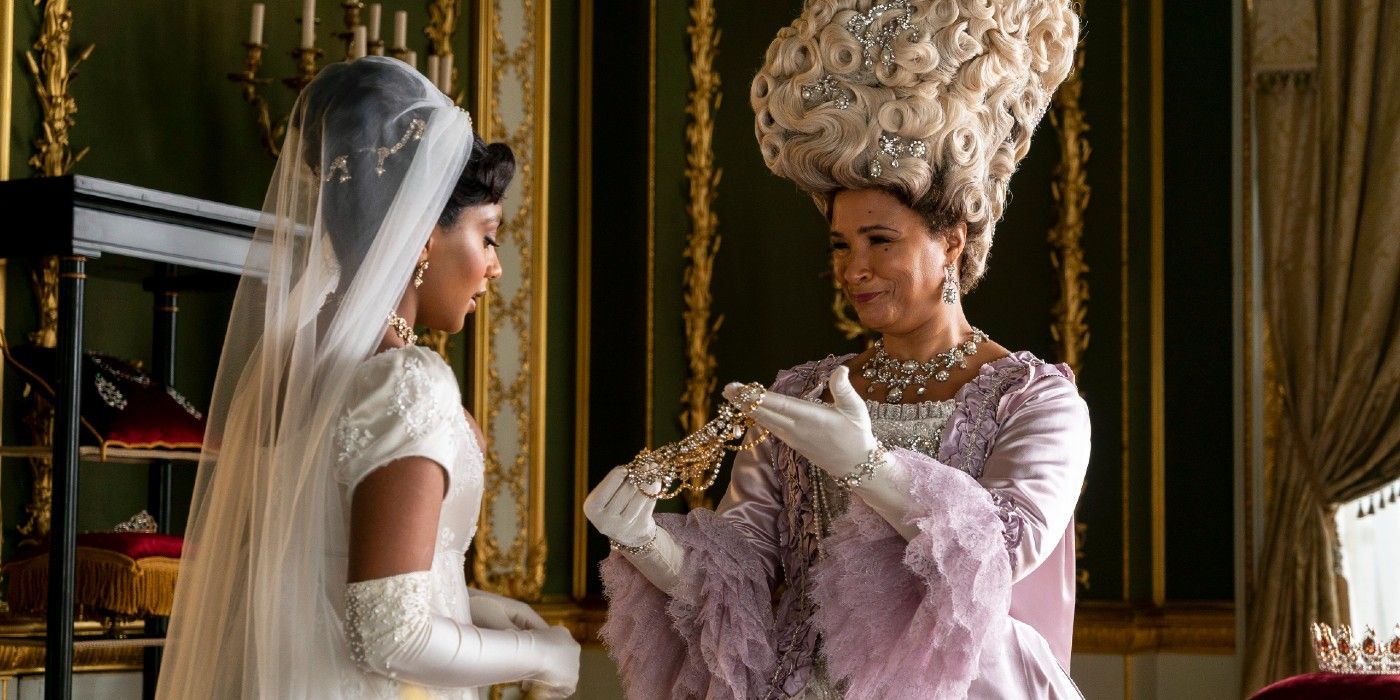The following contains spoilers for Bridgerton Season 2, now streaming on Netflix.
England has been restructured in fiction more than a few times. In Jane Eyre and other Brontë sisters novels, an entirely unique universe of British countryside was used. In Harry Potter, a secret part of England existed outside of Muggles' perception. The England in Bridgerton is different not because of some magical history or newly created part of the country, however, but because it completely revises the history of England. Rather than existing in a Georgian England rife with colonialism, racism and orientalism, Bridgerton's London is filled with life and love among people of all colors, pocketbooks notwithstanding.
In many narratives, this is actually rather problematic. Often, narratives look at the questionable elements of a country's history and simply look the other way, essentially stating that the characters "don't see race." This certainly avoids any of the issues that can arise from a racist society and allow for the story to continue unmarred by such, but doing so does two significant things: it regards such history as a triviality and ignores the cultures of the other people represented. In spite of how frequently sci-fi and fantasy attempt to make their way in a "post-race" society, Bridgerton sets the stage for its spinoff and eschews that for a society that truly recognizes and equalizes cultural diaspora without sacrificing any of its world. This makes Bridgerton a model for future fiction, whether it be historical fiction or beyond.
Bridgerton Knows Its Characters Are Part of Diaspora's Legacy
In spite of the way the word flows, diaspora is generally a good thing. It is best described as the culture that is exported along with people who move to other countries. Often, this is expressed in food. In Britain, for example, centuries of Indian immigration have caused various types of curry to be as intrinsic to the national taste buds as hamburgers are to America. Likewise, food in America owes a great deal of its signature style to Dutch and German peoples who brought baking and fruits from their native countries to the colonies.
The issue here is that many of these people who are members of diaspora came to the country against their will or were willing to put up with racism. Where many narratives simply ignore this centuries-long conflict, Bridgerton recognizes it. In the first season, Lady Danbury briefly recalls to her godson the horrid situation of Black people in this fictional England "until a king fell in love with one of us." In this, Bridgerton re-exerts its story (the sentence is part of a monologue extolling the powers of love, after all) while also hinting at the fact that, yes, these people are different races. And that is fine.
Bridgerton Recognizes That Culture Is Part of Life
LIkewise, Bridgerton doesn't try to make a massive affair of its multiculturalism -- not to say it doesn't deserve such. It subtly weaves the culture of its characters through conversations and subtle parts of scenes. This is especially true in the characterization of Katharni "Kate" Sharma and Mary Sharma. These names alone show the characters' culture affecting them. Kate, born to a pair of people in India, was given an Indian name that was then anglicized. Mary, however, was born to a Brit and an Indian man, her name, therefore, recognizes both cultures.
The two characters also subtly weave in aspects of an Indian accent occasionally when in a state of high emotion, both showing that the characters are putting on a false face in order to fit into Bridgerton's high society and simultaneously showing that, unlike the fake French and Irish accents that find their way out of the mouths of other characters, this is much more like a person who speaks cockney slipping briefly back into the accent. Again, the race and culture of the characters surface while moving the story further forward.
This is all quite subtly done, but aspects that don't affect the story are, ironically, much more obvious. Early on in the second season, Kate bemoans the weak tea of Britain. Later, she pours a cup and steeps in it cardamom and various spices, making the tea a true chai. This is never regarded in the series, nor is there a conversation regarding how it is far better. A single throwaway line and an establishing shot show that some spices very important to India are woven into Kate's characterization. This subtle use of other activities to provide characterization is woven into the series, and culture is just one example.
Before Mary and Anthony's failed wedding ceremony, the Sharmas apply Haldi (tumeric) to her while chatting about the upcoming nuptials (whether this was done to Kate is not known). At one point, before the characters go to bed, Kate oils Mary's hair mid-conversation. All of this is done not as a major point of having the audience take note of cultural differences. In fact, none of these things are explained. Much as it isn't the job of people of color to educate others about their culture, so too does Briderton not make it the job of the narrative to note that yellow is an auspicious color in India, or that oiling hair is normal among most people of color or even that chai is just the Hindi word for tea.
This is why Bridgerton's treatment of race and diaspora is so unique and strong. The series recognizes it while also using storytelling tools to show that, yes, this is perfectly normal for the characters. It doesn't attempt to justify the appearance of race and culture on-screen. Rather, it simply shows another version of England complete with racial equality, yes, but not racial sameness. This stumbling block to other media has proven an incredible boon for Bridgerton, and the recognition of it has proven a brilliant narrative to be even more than the sum of its parts.
Bridgerton is currently available to stream on Netflix.



